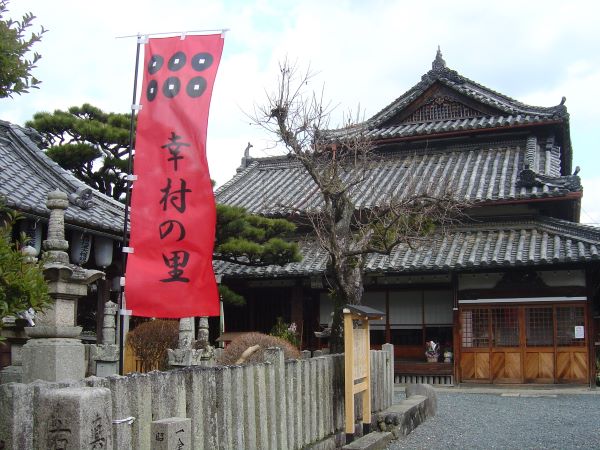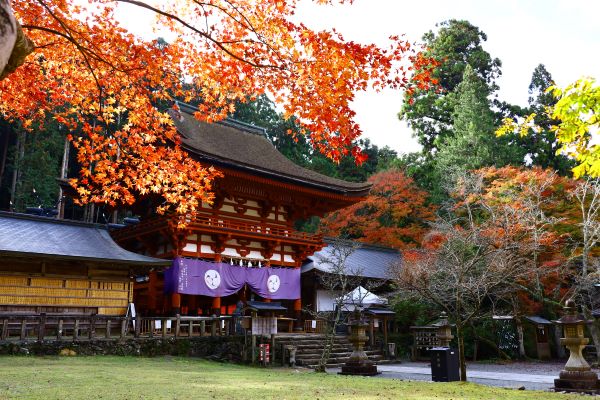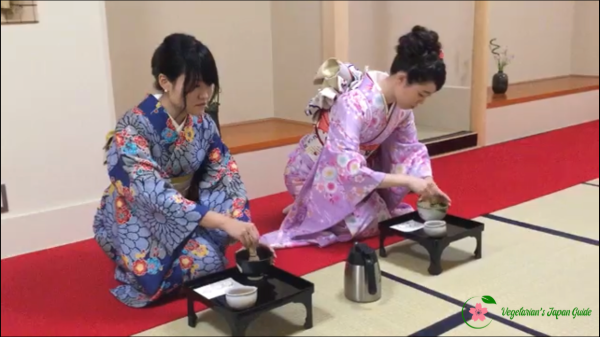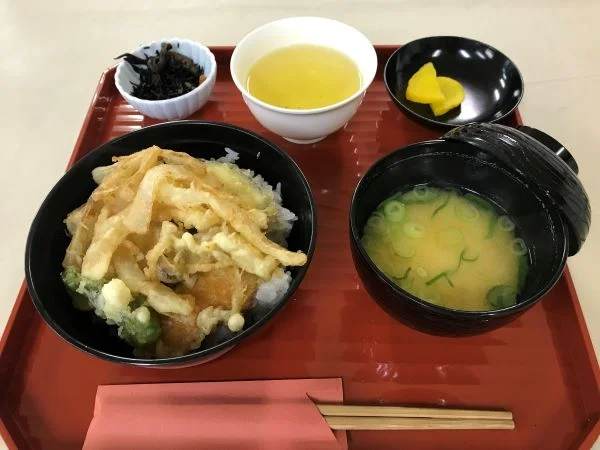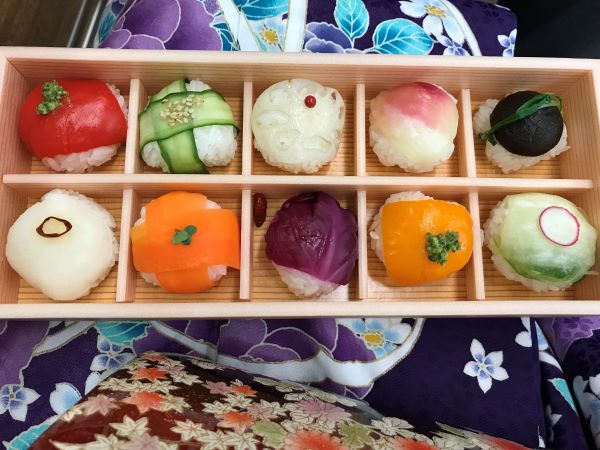Kōyasan, one of the Sacred Sites and Pilgrimage Routes in the Kii Mountain Range (紀伊山地の霊場と参詣道) that was registered as a World Heritage Site in 2004, is a popular destination for tourists. However, if you are interested in samurai history, you will want to extend your visit to Kudoyama Town (九度山町) at the foot of the mountain!
Kudoyama, a town that remains unknown to most people who visit Kōyasan because they are in a rush to the sacred ground, was actually one of the trailheads to the mountain before the train line was completed. The temples and shrines in Kudoyama are all related to Kōyasan and used to coexist with it.
For fans of the legendary samurai, Sanada Yukimura, Kudoyama is one of the major pilgrimage sites in Japan. The town is where Yukimura and his father, Sanada Masayuki, were exiled and confined for 14 years. Many historical sights related to the Sanada Clan are just a short walk from Kuyodama Station.
Depending on where your interest lies, pick and choose from the below list of attractions to your itinerary!
- Kudoyama Station (九度山駅)
- Zenmyōshō-in Sanada-an (善名称院)
- Yukimura-an (幸村庵)
- Kudoyama Sanada Museum (九度山・真田ミュージアム)
- Roadside Station Kaki no Sato Kudoyama (道の駅 柿の郷くどやま)
- Jison-in Temple (慈尊院)
- Niukanshobu Shrine (丹生官省符神社)
- Kōyasan Chōishi-michi (高野山町石道)
- Niutsuhime Shrine (丹生都比売神社)
- Futatsu Torii (二ツ鳥居)
Besides the above list of attractions, you can refer to the official website HERE for more travel ideas.
Kudoyama Station (九度山駅)
As soon as you arrive at Kudoyama Station, almost everything you see will have Sanada’s family crest featuring six mon coins. As one of the most beloved feudal lords by history buffs, the people of Kudoyama are proud of the fact that the town housed Sanada Yukimura and his family, where they were confined for 14 years after the famous battle in Sekigahara (関ケ原の戦い).
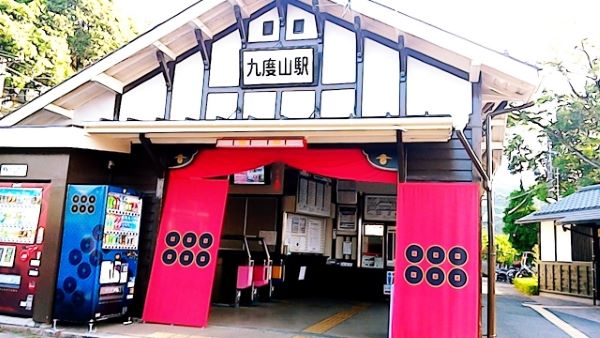
So what does the family crest mean? It is the amount of money the Japanese believe needs to be paid for crossing the Sanzu River (三途の川) safely to reach the afterlife. The soldiers of the Sanada Clan always carried six mon coins when they were on the battlefield. This symbolized they were ready to die for the glory.
In the small town, spotting the historical sites related to the Sanadas is easy. Just follow the flags with the six mon coins!
Zenmyōshō-in (善名称院)
The first attraction with a deep connection to the Sanadas is Zenmyōshō-in.
It is still unclear where the family was actually based during their confinement in Kudoyama. Still, most people support the hypothesis that the residence where the family spent 14 miserable years used to stand on the temple’s ground. This is why Zenmyōshō-in is also known as Sanada-an (真田庵).
For more information about Sanada-an’s attractions and myths, refer to our Zenmyōshō-in article!
Kishū Kudoyama Sanada Festival (紀州九度山 真田まつり)

Sanada-an, where the Sanadas spent the majority of their late-life in, the temple is where the samurai parade of the Kishū Kudoyama Sanada Festival ends each year.
The 2-day annual festival usually takes place on the 4th and the 5th of May. It is one of the biggest events in Kudoyama. The main event venue is Roadside Station Kaki no Sato Kudoyama (道の駅 柿の郷くどやま), where various performances are taken place on the stage. You will also find many of the local shops having a temporary stalls set up there.
In the afternoon on the second day of the festival, a parade led by cosplayers of Sanada Masayuki and Yukimura with their armed soldiers following in the back holding various weapons will take place.
Click HERE for a list of attractions in Kudoyama.
Yukimura-an (幸村庵)
Yukimura-an is the perfect place to taste the kind of soba noodles from Yukimura’s hometown – Shinano Province (信濃国).
Soba was and still is the main food in the now Nagano Prefecture. Having to suddenly relocate to Kudoyama, what the Sanadas brought with them is the techniques of how Nagano-style soba noodles are made.
The soba restaurant – Yukimura-an, established in 2010, uses soba powder from Nagano and makes noodles the Nagano way. Most of the dishes on their menu are named after one of the family members of the Sanada Clan. Making you feel like you are closer to this legendary family when you order!
Of course, the restaurant is decorated with Sanada’s six mon coins with the base color of red. The thing that will absolutely catch your attention is the replica of Yukimura’s red armor! If you want to sit closer to it, arrive at the restaurant early, or you have to bet on your luck (^_-)-☆.
For photos of their dishes, please check out the official website HERE.
Yukimura-an’s Opening Hours and Access Information
- The restaurant is open from 11 am to 6 pm daily except Mondays.
- If Monday is a public holiday, the restaurant will close on the next business day.
Click HERE for a list of attractions in Kudoyama.
Kudoyama Sanada Museum (九度山・真田ミュージアム)
Kudoyama Sanada Museum is a facility completed in 2016 after the Japanese drama Sanadamaru was on air. If you understand Japanese, it is the perfect place to learn more about the life of Sanada Masayuki, Yukimura, and Yukimura’s son, Daisuke.
For those who don’t understand Japanese, you should still be able to enjoy the videos playing in the museum. Images and other illustrations at each section of the facility will also give you a rough idea of their life stories.

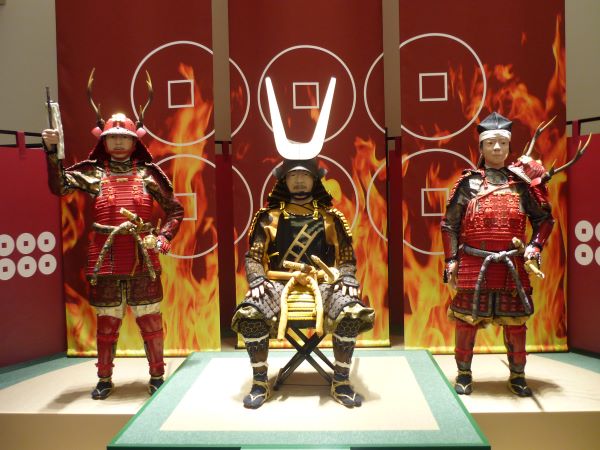
Replicas of armors and weapons used at the time can be found throughout the museum. Some of them can even be held in your arm!
Also, if you love ninjas, a small part of the museum is dedicated to the Sanada Residence in Nagano. Unaware by many, the house is like a ninja house full of tricks. Not only children but even adults can also enjoy the room built to imitate the Sanada Residence (=゚ω゚)ノ.
For a visual idea of each section of the museum, refer to HERE and scroll down to click on the video camera.
Kudoyama Sanada Museum’s Opening Hours, Admission Fees, and Access Information
- The museum is open from Wednesday to Sunday from 9 am to 5 pm.
- The last admission is at 4:30 pm.
- If Monday and/or Tuesday is a public holiday, it will close on the next business day.
- The museum will also close from the 29th of Dec to the 3rd of Jan.
- The admission fee is
- 500 yen for adults
- 300 yen if no special exhibition is on
- 250 yen for elementary and junior school students
- 150 yen if no special exhibition is on
- 500 yen for adults
- The museum is a 10-minute walk from Kudoyama Station (九度山駅).
- There is no car park at the museum. Please utilize the car parks near it.
Click HERE for a list of attractions in Kudoyama.
Roadside Station Kaki no Sato Kudoyama (道の駅 柿の郷くどやま)
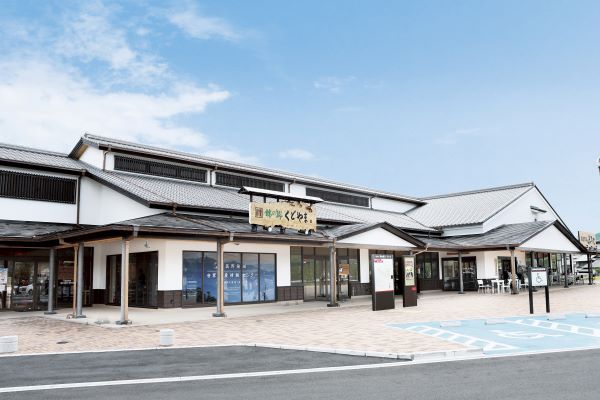
The roadside station in Kudoyama differs from many of its peers in a few ways.
Firstly, great news for those like us who don’t like to drive but want to visit a roadside station filled with local specialties. The Roadside Station Kaki no Sato Kudoyama is only a 15-minute walk away from Kudoyama Station!
Then, Roadside Station Kaki no Sato Kudoyama has an upgraded version of the tourist information center.
Instead of a small counter, the World Heritage Center (世界遺産情報センター) is more like a museum type of facility filled with information relating to the world heritage sites in Kudoyama Town, Kōyasan, and Chōishi-michi.
With an English explanation under Japanese, it is also the place you want to visit for more information about the Sanada Clan for non-Japanese speakers.
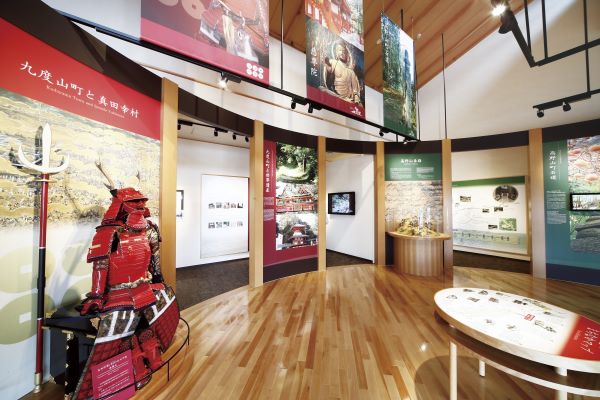
Lastly, as the name of the roadside station has suggested, the region is a famous place for persimmon production. If you haven’t tried one before, then you must. The tomato-looking fruit is as sweet as candy!
Made from the locally-sourced persimmon, grab one of the persimmon bread and persimmon soft serve from the bakery and enjoy them when you come to Kudoyama!
During lunchtime, light meals are served in the dining area as well (albeit there is probably no complete vegetarian option).
Roadside Station Kaki no Sato Kudoyama’s Opening Hours and Access Information
- The souvenir corner is open from 9 am to 6 pm.
- The World Heritage Center is open from 9 am to 5:30 pm.
- The bakery is open daily from 9:30 am to 4:30 pm.
- Apart from the bakery, the facilities inside the roadside station are closed from the 1st to the 3rd of January.
Important: During lunchtime on weekends and public holidays, the roadside station can be extremely crowded.
Click HERE for a list of attractions in Kudoyama.
Jison-in Temple (慈尊院)
Originally, to get to Kōyasan, pilgrims needed to hike through the long approach called Kōyasan Chōishi-michi (高野山町石道), starting from the foot of the mountain. The starting point of that pilgrimage route is the Jison-in Temple.
Established as the “front door” of Kōyasan by Kōbō Daishi, it was the place where his mother stayed after he founded Kōyasan.
As women were forbidden to enter the sacred mountain back then, even Kōbō Daishi’s mother couldn’t get a peek at her son’s great work.

Obeying the rule and wanting to make his mother’s heart at peace without worrying about him, it is said that Kōbō Daishi visited his mother nine times during her time at Jison-in. This is also the reason why the area is called Kudoyama.
It is also said that his mother held a deep faith in Maitreya Bodhisattva, the temple’s principal image.
The statue of Maitreya Bodhisattva, currently a National Treasure, is only exhibited to the public once every 21 years. So normally, pilgrims can only worship the Maitreya Bodhisattva on the other side of the worship hall’s wooden doors.
Gon, The Usher of Kōyasan
During the 1980s, something special happened to Jison-in. One day, the stray dog who lived close to the temple started becoming the usher for Kōyasan’s pilgrims. The dog who liked the sound of the bell of Jison-in was a regular visitor of the temple. Since he was always around whenever the bell was knocked, people started calling it “Gon”.
In the beginning, Gon accompanied pilgrims between Kudoyama Station and Jison-in. As time passed, Gon started basing in Jison-in and became the guide dog between Jison-in and Kōyasan. He would depart the temple in the morning and hike through the 20 km approach to Kōyasan’s Daimon Gate. At night, he reappeared at the temple.
As no one had taught Gon to do so, and 1,200 years ago, Kōbō Daishi was led by two dogs when he first founded Kōyasan, pilgrims started to see Gon as the reborn of the dogs who showed Kōbō Daishi the way to the sacred ground.
Gon, unfortunately, is not with us anymore. Loved by pilgrims around the country, Jison-in made a stone statue for him and put it next to Kōbō Daishi’s statue in 2002, the same year that he passed away.
Nyoninkōya (女人高野)
Jison-in is also known as Nyoninkōya. When women were forbidden to enter Kōyasan, Jison-in was the temple closest to Kōyasan that women could visit. This is why it is named Nyoninkōya, with Nyonin meaning women in Japanese.
In 2004, together with several pilgrimage routes and temples, it was registered as a World Heritage Site as a part of the Sacred Sites and pilgrimage Routes in the Kii Mountain Range.
As a popular temple among female pilgrims, Jison-in has become a hotspot for people to pray for female-related wishes. Whether it is child-granting or illness, Jison-in is the temple to go to!
For the ema you write your wishes on, to re-emphasize the type of wishes that the temple specializes in, their wooden plates come with female breasts attached on the back.
The ema you purchase from the temple will have the wooden plate and the breast separate. Otherwise, the bumpy breasts will make it harder for you to write your wishes on the plate. Once you finish writing, enjoy putting everything together and hang it in the designated area (=゚ω゚)ノ.

Jison-in’s Opening Hours and Access Information
- Jison-in is open from 9 am to 5:45 pm.
- From Nankai’s Kudoyama Station (九度山駅), it is a 20-minute walk.
Click HERE for a list of attractions in Kudoyama.
Niukanshobu Shrine (丹生官省符神社)
Climbing up the seemingly long staircases at the south of Jison-in, you will get to Niukanshobu Shrine at the top of the high ground.
The shrine has a deep connection with Jison-in Temple, and Kōyasan was also registered as a World Heritage Site as a part of the Sacred Sites and Pilgrimage Routes in the Kii Mountain Range.
When Kōbō Daishi founded Jison-in temple, he also founded this shrine as a place for prayers to various gods and as an administration office of Kōyasan. Together with Jison-in, the two sites were known as Man’nensan Jison-in (萬年山慈尊院). Initially, the shrine was named Jison-in Niukōya Myōjin-sha (慈尊院丹生高野明神社). After a few changes to the name, it is now called Niukanshobu Shrine.
The Kanshobu in the shrine’s name means a private land with the privilege of not being controlled by the government and not needing to pay taxes. Back then, the gods of the shrine were the guardian of the areas in Kōya who enjoyed such privileges.
You must be wondering, as a monk, why would Kōbō Daishi want to build a shrine? The reason is found in his encounter with Kariba Myōjin (狩場明神), who showed him the way to Kōyasan. Without this meeting, he probably would not have been able to establish all the important training grounds of Shingon Buddhism. If you want to know more about this part of Kōyasan’s history, please refer to the section where we talk about Miyashiro (御社) in our article on Danjō Garan!
Keen on hiking all the way up to Kōyasan?
Remember to stop by Niukanshobu Shrine to pray for a safe trip. It is also a place to enjoy cherry blossoms and autumn foliage (^_-)-☆.
Click HERE for a list of attractions in Kudoyama.
Kōyasan Chōishi-michi (高野山町石道)

If you enjoy hiking, instead of taking the ropeway up to and down from Kōyasan, trek through the 20 km pilgrimage route starting from Jison-in all the way to Danjō Garan, the heat of the sacred mountain.
The trail is marked every 109 meters by a stone pillar on the side of the road like the one in the photo.
For a map of the entire route, please refer to the official website HERE.
Kōyasan Chōishi-michi Observatory (高野山町石道展望台)
Around a 1-hour hike up a steep slope from Jison-in, a little bit off the Kōyasan Chōishi-michi, there is an observatory that will give you a panorama view of the plain where the Kinokawa River (紀の川) flows. Not only you can see Kudoyama Town, Hashimoto City (橋本市), Katsuragi Town (かつらぎ町), and even Kōyasan (高野山) in the scenery!

How to Get to Kōyasan Chōishi-michi Observatory
Important:
☛ If you are heading out for nighttime scenery, please bring a torch, as no street lights are on the route.
☛ The road leading to the observatory is extremely difficult to drive. Also, there is no car park at the observatory. Therefore, hiking is the best way to access it.
Click HERE for a list of attractions in Kudoyama.
Niutsuhime Shrine (丹生都比売神社)
While Niutsuhime Shrine is not in Kudoyama Town, we include it as it is on the pilgrimage route of Kōyasan chōishi-michi (高野山町石道) starting from Jison-in Temple.
The shrine also has a deep connection with Kōyasan’s founding, Kariba Myōjin (狩場明神), formally known as Takanomiko no Ookami (高野御子大神), who pointed the way to Koyasan for Kōbō Daishi. Kariba Myōjin is one of the gods enshrined here. As you would have expected, Niutsuhime Shrine was also registered as a world heritage site.
For more information about this gorgeous shrine, please refer to our article on Niutsuhime Shrine!
Click HERE for a list of attractions in Kudoyama.
Futatsu Torii (二ツ鳥居)
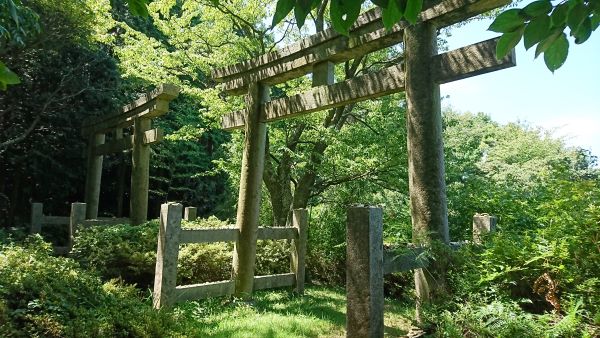
In 819, when Kōbō Daishi obtained Kōyasan from the gods Niu Myōjin (丹生明神) and Kariba Myōjin (狩場明神), he put these two torii gates there to mark the precinct of god. So beyond the gates, logging was forbidden.
Back then, the gates were made of wood. In 1649, they were reconstructed with granite by the 243rd head of Kongōbuji (金剛峯寺).
Why did he build two torii gates? The reason is there were two gods! So one gate per god (^_-)-☆. It is where pilgrims can worship the gods from afar.
Niu Myōjin (丹生明神) is another name of Niutsuhime no Ookami (丹生都比売大神).
If you are hiking all the way from Jison-in, you have completed one-third of the pilgrimage route to Kōyasan. Reward yourself by taking a rest at the observatory south of the gate for a wide view of Amano Basin (天野盆地), which features the beauty of Japan’s typical rural landscape.
In early June, corresponding to the stars in the sky, if you head to the river in the area at night, you will be surrounded by fireflies’ butt light!
How to Get to Futatsu Torii
From JR Kaseda Station (笠田駅), take Katsuragi Town’s Community Bus’s Amano Line (天野コース) and get off at Niutsuhime Jinja-mae (丹生都比売神社前). From the bus stop, it is a 30-minute walk.
Click HERE for a list of attractions in Kudoyama.
Discover Kōyasan, One of Japan’s Most Sacred Mountain
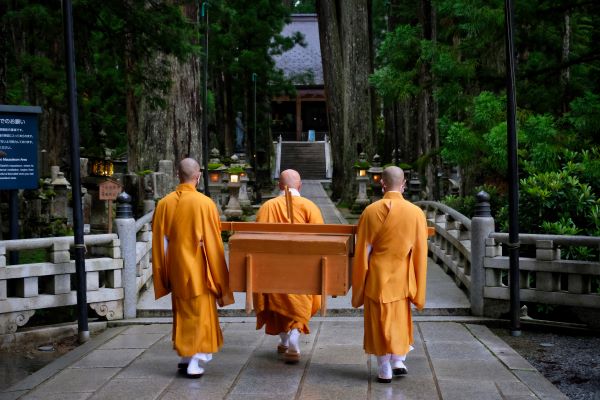
Kudoyama is like the prelude to the center of Japan’s Shingon Buddhism.
To find out more divine places to visit during your time at the sacred mountain, please read our article on Kōyasan. You will also find information on restaurants to enjoy the vegetarian Shōjin Ryōri, as well as temples you can stay overnight!
Also, when you get to the top of the mountain, don’t forget to stop by Rengejōin Temple (蓮華定院) for more life stories about the Sanada clan (=゚ω゚)ノ.


